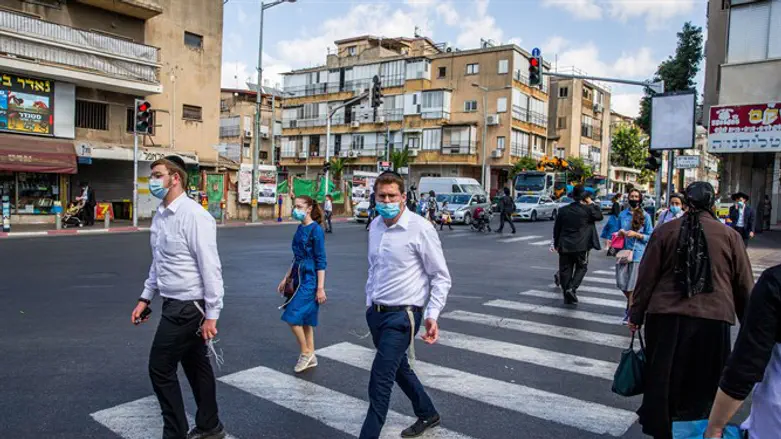
After Rechasim was removed from the government’s “red list” on Tuesday night, Modi’in Illit, Beitar Illit, and Bnei Brak are now also no longer classified as red according to the government’s traffic-light model, due to sharp drops in the rates of contagion in all three of these haredi-majority cities. For Bnei Brak, this is an especially dramatic development after months of being “red.”
“The great efforts made by the residents of Bnei Brak and their meticulous adherence to the guidelines have caused the drop in the rate of contagion,” a spokesperson from the Bnei Brak municipality said on Wednesday. “We will continue to exercise extreme caution, and also pray and do all that we can to protect the health of all of us.”
In light of the latest virus figures, the mayors of Bnei Brak, Modi’in Illit, and Beitar Illit have appealed to Prof. Ronni Gamzu, the government’s coronavirus project manager, and the members of the coronavirus cabinet, asking that their cities be released from strict lockdown regulations that have already been eased in other parts of the country.
Speaking at Rambam hospital in Haifa yesterday, Prime Minister Netanyahu appeared to threaten haredi cities that if breaches of regulations continued to be reported there, they would remain under total lockdown regardless of any drop in contagion rates. However, following protests from haredi MKs, Netanyahu “clarified” his statement and said that the sole criterion for easing the lockdowns in red zones would be the rate of infection.
